

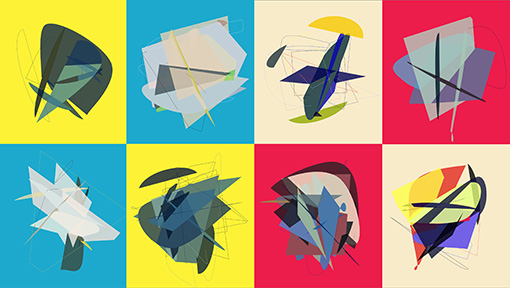
Abstract Reality is an interactive installation that creates 3D geometric art as an abstract expression of physical human bodies. The application takes viewers physical features and their relation to the physical space as inputs to generate and place basic geometric forms in a virtual 3D space. Each geometric shape, virtual position and orientation, and color are affected by individual viewer’s physical positions, movements, and dominant colors. The overall structure of the geometric shapes are controlled by a modified Voronoi diagram, a computational geometric algorithm, to explore novel aesthetics.
https://sa2017.siggraph.org/attendees/art-gallery?view=event&eid=99
Abstract
Most research on the interpretability of machine learning systems focuses on the development of a more rigorous notion of interpretability. I suggest that a better understanding of the deficiencies of the intuitive notion of interpretability is needed as well. I show that visualization enables but also impedes intuitive interpretability, as it presupposes two levels of technical pre-interpretation: dimensionality reduction and regularization. Furthermore, I argue that the use of positive concepts to emulate the distributed semantic structure of machine learning models introduces a significant human bias into the model. As a consequence, I suggest that, if intuitive interpretability is needed, singular representations of internal model states should be avoided.
Paper: arxiv.org/abs/1711.08042
Symposium: interpretable.ml
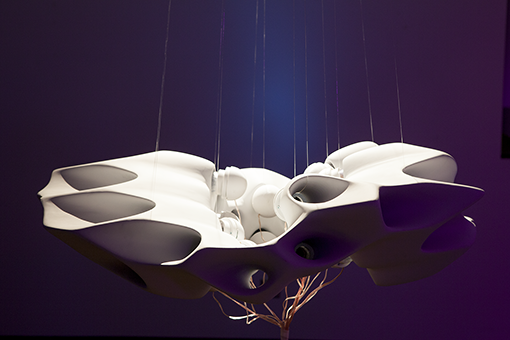
It Found A Voice... Now It Needs A Body*
With HIVE, we intended to explore the idea of a sonic intelligence: learning, experiencing, reacting, and finally, "thinking" in sound. Can we model such a system? A system with a body whose morphology is based on picking up and sending sound signals, a system who can learn from its environment and evolve in its response, a pseudo ‘being’ that traces our sonic foot-print and projects our sonic reflection.
Created via fusing aspects of sculptural form, spatial sound, and interactive methods, HIVE is an art installation that explores the relationship between sound, space, body, and communication. HIVE was produced in 2016 by Sölen Kiratli and Akshay Cadambi and debuted in Santa Barbara Center for Art, Science, and Technology (SBCAST) in December of 2016.
* From the tagline of 1996 animated feature film, Ghost In the Shell.

The Wolf Museum of Exploration and Innovaton: www.moxi.org
The workshop investigated computational aesthetics by asking each student to create a 3D animation based on classical geometrical art. 18 students’ works were presented to the public at the end of the workshop. More details about the workshop can be found here:
rodgerluo.com/projects/geometrical_extension.html
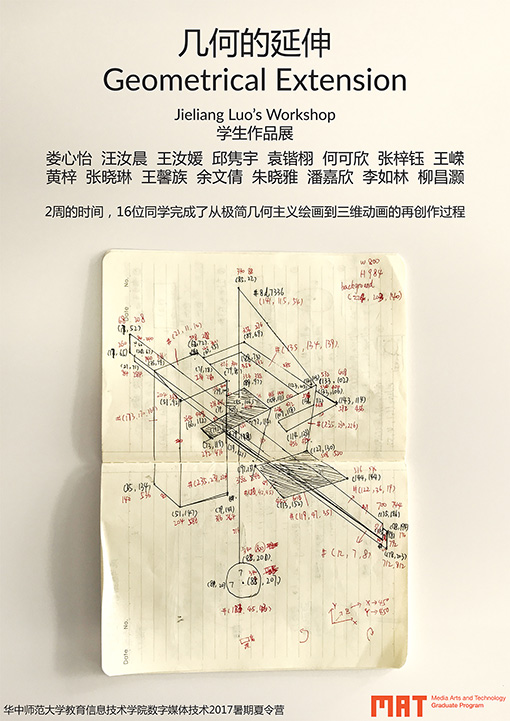
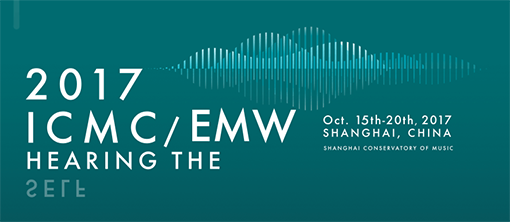
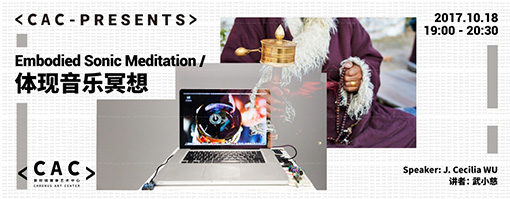
Cecilia also gave a guest lecture at the Cronus Art Center in Shanghai on Oct 18, 2017.
If you're attending the event, stop by the MAT table and talk about the Media Arts and Technology Program at UC Santa Barbara with our student representative Shashank Aswathanarayana.
This award provides full funding support for an academic year to outstanding doctoral students engaged in humanities research across all UC campuses. With this support, Jiayue Cecilia Wu will continue her dissertaion work under the supervision of her graduate advisor Professor Curtis Roads.
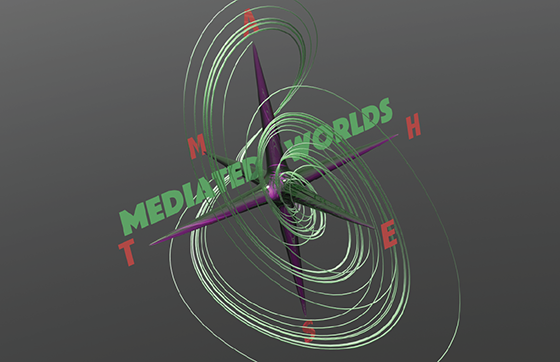
Tuesdays and Thursdays from 3:30 - 4:45pm, Arts 1356. Gold enrollment code: 60707.
Instructor: Marcos Novak
The title of the forum was "Complex Intersections: Transdisciplinary Engagements Across the Arts and Sciences", and was held July 20, 2017.
m.news24.com/news24/SouthAfrica/Local/Express-News/artworks-come-to-life-20170530
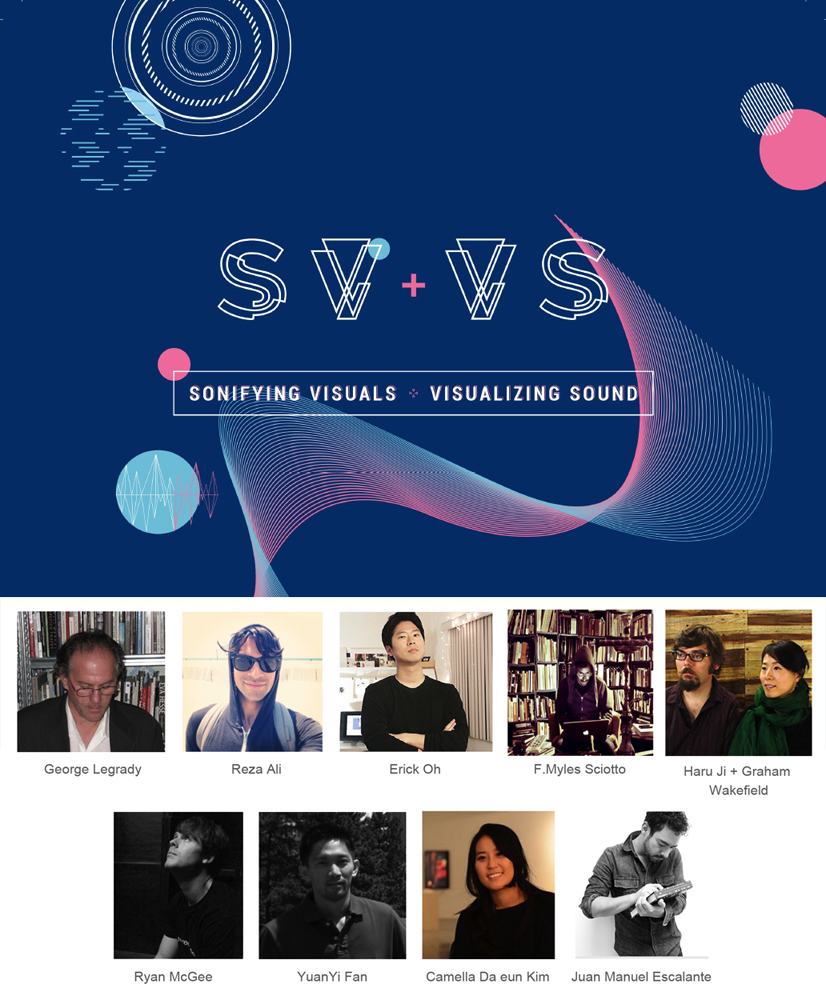
The exhibition is titled "SV+VS", and is curated by MAT alumni Yoon Chung Han. It is the third showing of the exhibition worldwide.
Artists: George Legrady (professor), Donghao Ren (PhD student), Jieliang Luo (PhD student), Reza Ali (alumni), Ryan McGee (alumni), Yuan-Yi Fan (alumni), F.Myles Sciotto (PhD student), Juan Manuel Escalante (PhD student), Haru Ji (alumni) and Graham Wakefield (alumni).
The first presentation will be at the 20th Conference of the Society for Philosophy and Technology at the Technical University of Darmstadt, Germany, from June 14-17. The second presentation will be at the International Colloquium "Exploring Edges" at the École Polytechnique Fédérale de Lausanne, Switzerland, from July 11-14.
www.philosophie.tu-darmstadt.de/spt2017/spt2017_pwt/index.de.jsp

The paper will present "HIVE" (2016), a parametrically designed interactive sound sculpture with embedded multi-channel digital audio which explores the intersection of sculptural form and musical instrument design. We examine sculpture as an integral part of music composition and performance, expanding the definition of musical instrument to include the gestalt of loudspeakers, architectural spaces, and material form. After examining some related works, we frame HIVE as an interactive sculpture for musical expression. We then describe our design and production process, which hinges on the relationship between sound, space, and sculptural form. Finally, we discuss the installation and its implications.

Photo: Joseph Armario
NIME: New Interfaces for Musical Expression www.nime2017.org.
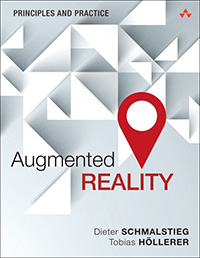
By overlaying computer-generated information on the real world, augmented reality (AR) amplifies human perception and cognition in remarkable ways. Working in this fast-growing field requires knowledge of multiple disciplines, including computer vision, computer graphics, and human-computer interaction. Augmented Reality: Principles and Practice integrates all this knowledge into a single-source reference, presenting today’s most significant work with scrupulous accuracy. Pioneering researchers Dieter Schmalstieg and Tobias Höllerer carefully balance principles and practice, illuminating AR from technical, methodological, and user perspectives.

Serving as the programmatic kickoff of the BAI, this year's symposium brings together artists and scholars to discuss how experts from diverse fields have collaborated in ways to keep the environment in focus.
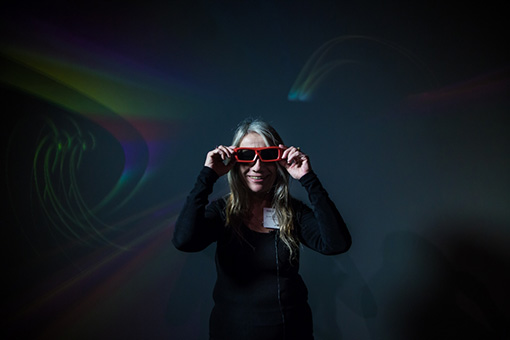
Photo: Matt Perko
The installation consists of a large 100-degree curved screen, 3D projectors and spatialized audio to display a simulation of the electrical fields of a hydrogen atom. People are able to interract with the simulation by adjusting parameters using touch screens and mobile devices. JoAnn Kuchera-Morin, the director of the AlloSphere Research Facility and professor of Media Arts and Technology, described the installation as an "immersive, interactive media composition and visual, aural, quantum synthesizer".
For more information, an article of the opening of the MOXI museum and the ARG's installation is published in UCSBs' news magazine "The Current":
Andrés Cabrera, JoAnn Kuchera-Morin, Curtis Roads. Computer Music Journal, Winter 2016, Vol. 40, No. 4, pages 47-61.
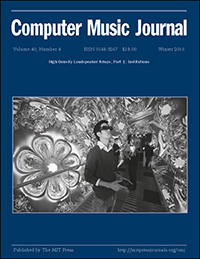
Abstract
Spatial audio has been at the core of the multimodal experience at the AlloSphere, a unique instrument for data discovery and exploration through interactive immersive display, since its conception. The AlloSphere multichannel spatial audio design has direct roots in the history of electroacoustic spatial audio and is the result of previous activities in spatial audio at the University of California at Santa Barbara. A concise technical description of the AlloSphere, its architectural and acoustic features, its unique 3-D visual projection system, and the current 54.1 Meyer Sound audio infrastructure is presented, with details of the audio software architecture and the immersive sound capabilities it supports. As part of the process of realizing scientific and artistic projects for the AlloSphere, spatial audio research has been conducted, including the use of decorrelation of audio signals to supplement spatialization and tackling the thorny problem of interactive up-mixing through the Sound Element Spatializer and the Zirkonium Chords project. The latter uses the metaphor of geometric spatial chords as a high-level means of spatial up-mixing in performance. Other developments relating to spatial audio are presented, such as Ryan McGee's Spatial Modulation Synthesis, which simultaneously explores the synthesis of space and timbre.

The title of the talk was "Oh Ambient Demons: Heuristics and Civilization", and the title of the workshop was "Oh Ambient Demons: Spatial Narratives/Narrative Spaces".